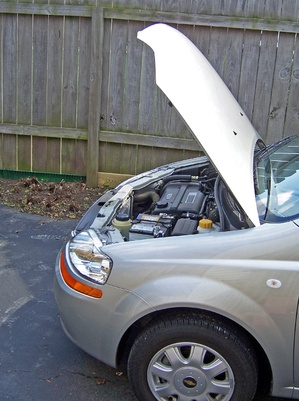
An automotive battery is nothing more than a lead-acid storage device. Inside the battery housing, chemical energy is converted to electrical energy which flows through wires and starts the car. A standard 12-volt, lead-acid battery has six cells. The cells are filled with sulfuric acid diluted with water. Although the battery is sealed, the water level can drop. Batteries in hot climates or that need to be charged often will often have low water levels. You should check your battery water level on a regular basis and add deionized or distilled water as needed.
Open the hood and locate the battery.
Wear gloves and goggles when working around uncapped batteries.
Remove the caps on the top of the battery. They will either pull off or unscrew.
Check the water level in the battery cells. Some batteries have low and full marks. If the water level is below the inspection hole, it is low.
Carefully add distilled or deionized water to the cell. Do not use tap water. The minerals commonly found in tap water can alter the electrolyte levels in the battery and affect the battery's voltage.
Fill the cell with water until it reaches the bottom of the inspection hole. Do not overfill the cell. Too much water in the cell can cause the battery to leak.
Replace the caps on the battery.